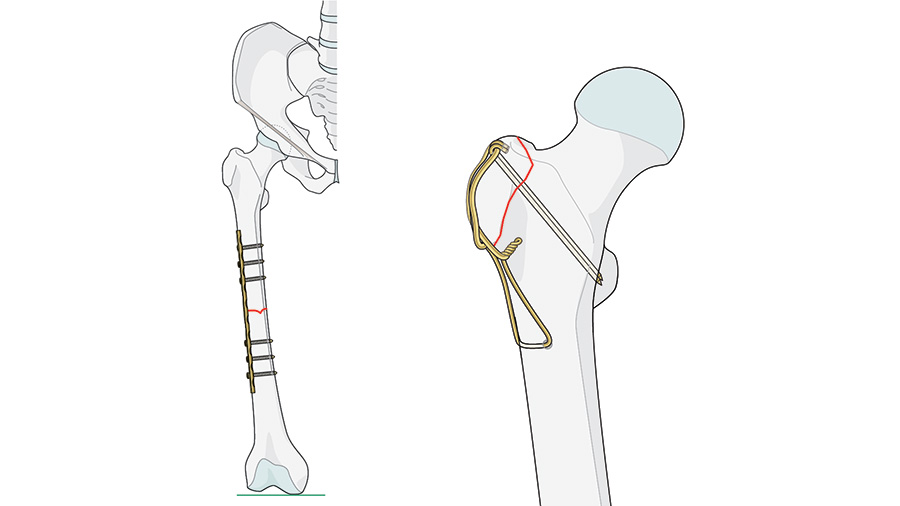AO Trauma updates educational content on the tension band principle

The Residents Education Task Force and the AO Surgery Reference now offer updated content reflecting changes in the understanding of the tension band principle and its applicability. The content update was driven by the AO Trauma Education Commission (AO TEC).
There is biomechanical evidence that in a few indications where K-wires and cerclage wiring are used to stabilize a fracture (tension band wiring), there was no conversion of a distraction force to compression. Therefore, these constructs do not meet the definition of a tension band, although they are successfully used in many clinical situations (eg, olecranon and patellar fractures). Such useful procedures should still be taught, but not as tension band procedures. In these instances, the term “cerclage compression wiring” is now preferred.
To align AO Trauma education with the best available evidence, the AO has reviewed all of its trauma educational materials and the AO Surgery Reference to clarify what a tension band is and how and where it can be used.
“The tension band principle remains a key principle in fixing and stabilizing fractures, but it is very important to understand where it can and cannot be applied,” Stefaan Nijs, one of the authors of the updated educational materials, explained. “In the past, I used to implicate patients with olecranon fractures fixed with cerclage compression wiring in whom the construct failed for not moving enough, assuming that the construct was a tension band, and therefore motion would lead to compression and thus facilitate healing. Now we understand that cerclage compression wiring of the olecranon does not necessarily convert distracting forces in compression. This has made me realize that many of these patients may have moved too much, and that my concern was inappropriate.”
Updated AO educational materials
The teaching materials for the tension band principles in the AO Trauma Course—Basic Principles of Fracture Management have been updated. This includes an updated lecture and a new teaching video for management of olecranon fractures. All templates in the Faculty Support Package have also been updated.
AO Surgery Reference
All references to the tension band principle across the AO Surgery Reference’s trauma modules were reviewed and updated where necessary. References to cerclage compression wiring were introduced, and a tension band principles document was produced to explain the principles involved and provide definitions, examples of correct use, clinical applications, and pitfalls.
The biomechanical principles involved are illustrated using interactive 3D animations provided by OSapp.
The AO Surgery Reference tension band basic principles document can be viewed here.
The review was carried out by Martin Jaeger (Germany) and Stefaan Nijs (the Netherlands). Updated AO Surgery Reference content was edited by Michael Baumgaertner (United States), Simon Lambert (United Kingdom), and Markku Nousiainen (Canada).
Updated teaching video content
Jaeger and Nijs additionally worked with the AO’s video production team to produce a new teaching video, “Ulna, olecranon—Transverse Fracture (2U1B1) Cerclage Compression Wiring,” for use in the basic principles course.
Watch the new teaching video:
References
- Brink PRG, Windolf M, de Boer P, et al. Tension band wiring of the olecranon: is it really a dynamic principle of osteosynthesis? Injury. 2013 Apr;44(4):518-22.
- Stoffel K, Zderic I, Pastor T, et al. Anterior variable-angle locked plating versus tension band wiring of simple and complex patella fractures – a biomechanical investigation. BMC Musculoskelet Disord. 2023 Apr 11;24(1):279.
- Thelen S, Schneppendahl J, Jopen E, et al. Biomechanical cadaver testing of a fixed-angle plate in comparison to tension wiring and screw fixation in transverse patella fractures. Injury. 2012 Aug;43(8):1290-5.
